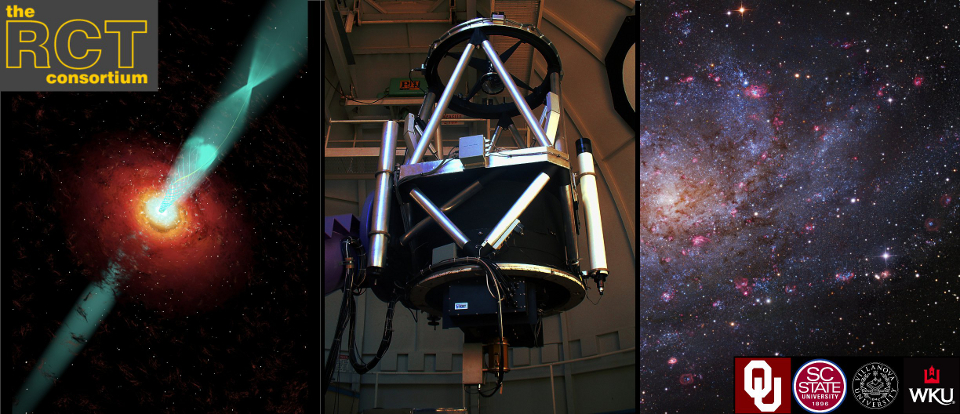There is a bug in the RCT scripts that occurs when parsing names with white spaces from the JPL Horizons ephemeris service. I’m still working on robust solutions. You may try putting quotes around your object names, like “C/2011 L1”. But I recommend looking up targets on http://ssd.jpl.nasa.gov/horizons.cgi to generate a Object Data Page, and using either the Record Number (indicated by Rec #: xxxxx in the upper left hand corner) or the MB number (in the upper right hand corner) as the object name in the IsPlanet key on the RCT Observing Scheduler.
Known issues with PSF quality
Telescope was adjusted for seasonal drift in focus. Images now show a three-point PSF indicicating that the mirror support compressor is not opperating properly.
RCT ECT tweaked
Please be aware that the RCT’s online Exposure Time Calculate has been modified to fix a bug in calculating the signal-to-noise for a known magnitude and integration time. Calculations modes for exposure time and magnitude are unaffected.
RCT working again
The RCT is back to fully functioning and the scheduler is back online. You should now be able to add your targets to the queue with no problems.
The problem with the camera was not the fiber channel or ethernet cards, but the same power supply that we have had troubles with in the past. In a sense this is good, as the other two are custom cards for which there are likely to be only a few spares. The power supply is pretty generic and easily found on-line.
In other news, Brevin has resolved the first UPS quote at no cost, and found a better supplier. We are waiting on an updated quote, but we expect it should ship in a week or two.
CCD still down
Technicians were able to go out to the telescope yesterday and believe they have identified the problem. We expect that the system will be offline for at least the next few weeks in order to get parts and make repairs.
I will post as soon as the telescope is back online.
RCT offline for the next few days
Hi RCTers,
Please be advised that we have discovered a problem with the main camera on the RCT. We expect the system to be offline for the next couple of days. I will send an update as soon as the queue comes online again.
Thanks for your patience!
The Spindle Galaxy as seen by RCT
Some of you might have noticed this week that we have cleared some space in the queue to allow a couple of students to take data for their Astronomical Observational Techniques class.
Jason Leszczewicz, a Physics major at WKU, took this image of galaxy NGC 5866 for his project to determine the star formation rates of a sample of galaxies. This image is a raw 300s exposure taken in the H_alpha_continuum (6444A) filter.
NGC 5866 (also called the Spindle Galaxy or Messier 102) is a relatively bright lenticular or spiral galaxy in the constellation Draco. As clearly seen in this image, it’s most prominent feature is it’s edge-on dust disc.
It was so pretty I thought everyone should see it.
Let me know if you have any similarly pretty images taken with the RCT!
Thanks,
Rachel
Pointing Error
Hi Folks,
It looks as if we were slightly off in our pointing for some observations last night resulting in acquire errors for some guided targets. Observers who did obtain data, can you let me know if you also saw a slight offset in your pointing. Any other comments about data quality you’d like to add?
All data now available
Some of you noticed that even though the database form was available, data from Feb-7 to present were not available in the archive. This was a hangup in the archiving script, due to a partially downloaded file at the point the server went down. The archive is now fully available, and all data to present is searchable.
RCT down for 39 minutes
The telescope was down from 03:02 to 03:41 UT on 2012-02-24 to address an issue with the focus. The focus algorithm was adjusted.

